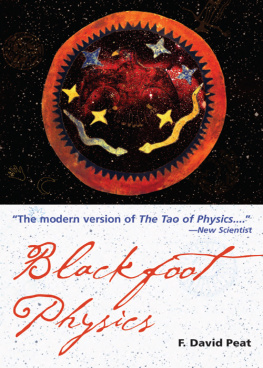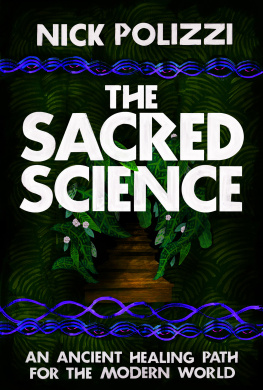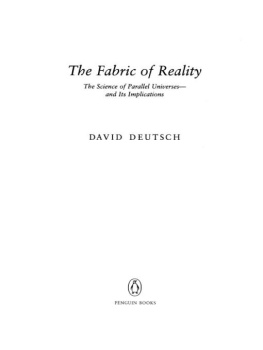
This edition first published in 2005 by
Red Wheel/Weiser, LLC
York Beach, ME
With offices at:
368 Congress Street
Boston, MA 02210
www.redwheelweiser.com
Copyright 2002 F. David Peat
All rights reserved. No part of this publication may be reproduced or transmitted in any form or by any means, electronic or mechanical, including photocopying, recording, or by any information storage and retrieval system, without permission in writing from Red Wheel/Weiser, LLC. Reviewers may quote brief passages. Originally published as Lighting the Seventh Fire by Carol Publishing Group in 1994, this edition previously published by Phanes Press in 2002. An Alexandria Book.
Library of Congress Cataloging-in-Publication Data available upon request from the Library of Congress
ISBN 1-57863-371-0
Printed in Canada
TCP
13 12 11 09 08 07 06 05
8 7 6 5 4 3 2 1
The paper used in this publication meets the minimum requirements of the American National Standard for Information Sciences-Permanence of Paper for Printed Library Materials Z39.48-1992 (R1997).
www.redwheelweiser.com
www.redwheelweiser.com/newsletter
This book is dedicated to the First People of Turtle Island in the hope that the Circle of Four Races will grow. I hope that there will be something in this book that pleases and in some way reflects what I have experienced and been told. At best I can say with Geoffrey Chaucer, And if ther be anythyng that displese hem, I preye hem also that they arrette is to defaute of myn unknonnynge, and nat to my wyl, that wolde ful fayn have seyd bettre if I hadde had konnynge.
Contents
Acknowledgment
I would like to thank the many Native American people who offered me their friendship and hospitality and who freely shared their knowledge and wisdom with me. Some of them are specifically mentioned by name in the text. If I were to attempt to mention everyone here I would run the risk of inadvertently leaving out the name of a friend or someone who helped me. I would, however, like to mention three people who have been particularly important to me and ask them to stand as representatives for allthey are Leroy Little Bear, Ernie Benedict, and Sa'ke'j Henderson.
Author to Reader: A Different Worldview
W ithin the chapters of this book can be found discussions of metaphysics and philosophy; the nature of space and time; the connection between language, thought, and perception; mathematics and its relationship to time; the ultimate nature of reality; causality and interconnection; astronomy and the movements of time; healing; the inner nature of animals, rocks, and plants; powers of animation; the importance of maintaining a balanced exchange of energy; of agriculture; of genetics; of considerations of ecology; of the connection of the human being to the cosmos; and of the nature of processes of knowing. In addition, there are references to technologies such as the Clovis spear point, ocean-going vessels and birchbark canoes, tepees and longhouses, the development of corn and other plants, farming methods, observational astronomy and record keeping, and the preparation of medicines from various sources.
All of these topics have been gathered together under the general rubric of Indigenous science, a term I have used following the lead of Pam Colorado, Leroy Little Bear, and others. While I am comfortable with this term Indigenous science, I am also a part of the Western science tribe and I can already sense the kind of objections that its members could make: Why do you use the term science? Native Americans don't have any science in the real sense of the word. They don't have an ordered system of investigation or rational theories of the universe as we do. Science is a specific and disciplined approach that was developed in the West. Indigenous people have traditions, folklore, and mythology.
There might also be the objection that I have confused science with technology, that while, critics may say, Native people have indeed developed their crafts and artifacts to a fine art, this has nothing to do with real science. Moreover, the various innovations I have mentioned are simply the result of trial and error combined with patient observation.
These sorts of criticisms are generally presented when Indigenous peoples all over the world are discussed. It is still possible to find words like primitive, superstitious, undeveloped and even pagan in books and museum exhibitions referring to Native peoples. One tends to hear the word civilization used only in the context of the Incas, Mayans, and Aztecs.
Civilization, it is held, comes about when people have advanced to the point where they become centralized into cities, where crafts become specialized, and artisans and merchants appear. Civilization is the feature of a society that has sufficient leisure for the perfection of arts, as opposed to crafts and decoration; science, as opposed to superstitions and trial-and-error technologies; literature, as opposed to folktales and oral traditions; organized religion, as opposed to animism and polytheism. Thus, it is argued, the societies of Turtle Island (the American continents) never developed to the extent that they could enjoy that degree of complexity and sophistication that provides the fertile ground in which true science can grow.
Texts on psychiatry speak of Indigenous peoples as representing earlier and more primitive forms of mental and social development. The study of primitive peoples is of interest to the psychologist and psychiatrist more for the light it casts on hypothetical stages in the development of the human mind and human societies than for the intrinsic values that Indigenous metaphysics may hold. The spirituality of The People is considered to belong to the supposed earlier animistic or polytheistic stages in the development of world religions. Each of the Indigenous groups or nations refers to itself by a name that can generally be translated as meaning the people, the true people, the real people, etc. On the evolutionary ladder of religions, the spirituality and traditional ways of the Lakoda, Hopi, and Haida stand in relation to Judaism, Islam, and Christianity as the lower primates do to human beings. Learned papers discuss the question of whether certain Native American groups had advanced to the early stages of monotheism, or if their talk of the Creator was merely a parroting of what the first missionaries had told them.
While many medical professionals would agree that certain traditional curing ceremonies appear to help in activating the patient's natural processes of healing, they would argue that there exists no proper medicine in the sense of an integrated approach to sickness that involves a comprehensive theory of the origin of disease and the biochemistry of the body; a range of diagnostic tools; well defined surgical interventions; and a broad base of drugs, immunization techniques, and so on. Scientific medicine, it is claimed, only exists within the West and what Indigenous Americans practice is a mixture of old wives' tales, folk remedies, and the sorts of superstition and self-hypnotism that are associated with faith healing.
I believe the verdict of most hard-nosed scientists would, be that while Indigenous metaphysics and philosophy is certainly fascinating and, to the extent that it brings people close to nature, attractive; nevertheless, it should not be called a science. This is the inevitable conclusion within a worldview whose values are dominated by the need for progress, development, improvement, evolution, and the linear unfolding of time. Within such a world it stands to reason that things evolve, that automobile engines become more efficient, that new computers are faster, and that some societies are more highly developed than others.
Next page






